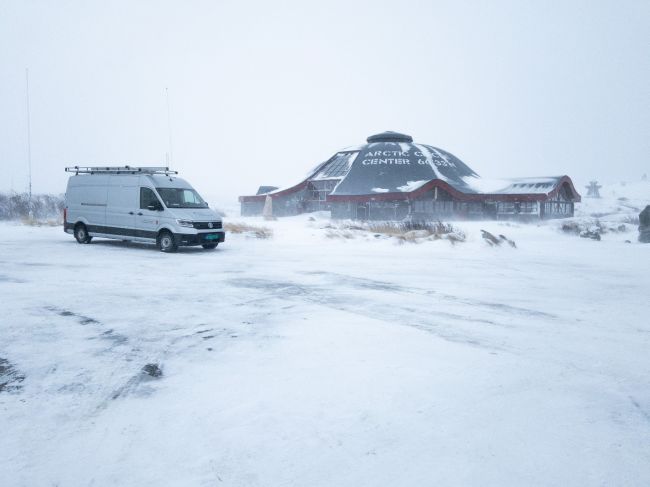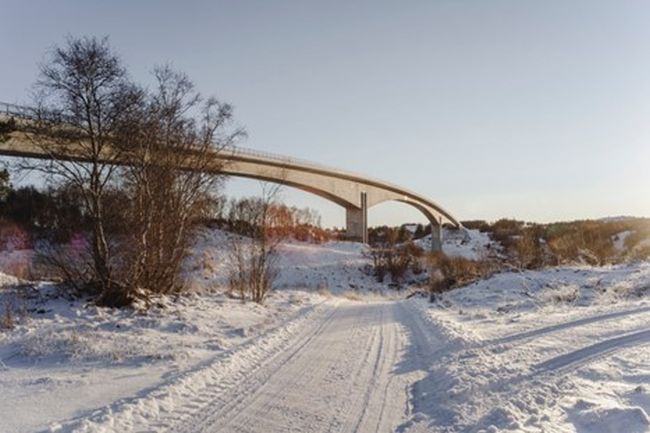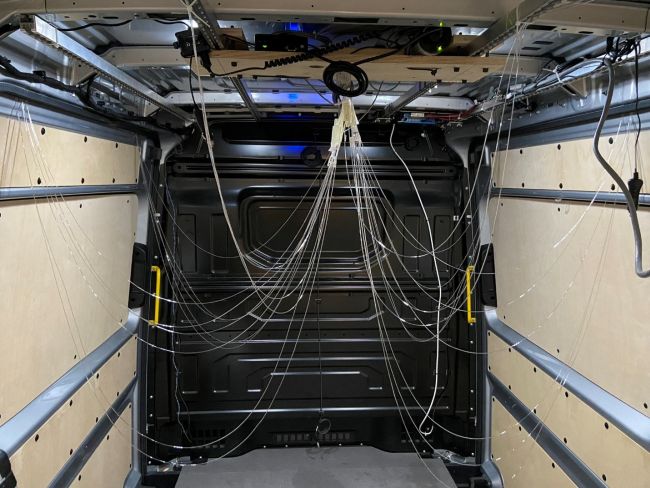OpenBridge
OPENBRIDGE: Understanding Aerodynamic Forces on Vehicles in Crosswinds
OPENBRIDGE: Understanding Aerodynamic Forces on Vehicles in Crosswinds
OpenBridge karusell
-

The test vehicle on a data acquisition excursion -

The Dolmsund bridge -

The pressure measurement system installed in the test vehicle
OPENBRIDGE: Understanding Aerodynamic Forces on Vehicles in Crosswinds
How Do Crosswinds Affect Vehicles?
Many drivers have experienced their vehicle swaying when crossing a bridge or driving on an exposed road during strong winds. These movements are caused by aerodynamic forces that act on the vehicle, affecting its stability and control. While engineers have studied the effects of steady winds on vehicles, there is much less understanding of how sudden gusts and turbulent airflow influence vehicle dynamics.
This research focuses on identifying and analyzing these transient aerodynamic forces to improve road safety, bridge design, and vehicle control systems. By understanding how vehicles respond to crosswinds, we can develop better safety measures and technologies to assist drivers.
How Is This Studied?
To investigate these forces, a specially instrumented test vehicle is used to collect high-precision measurements while driving through wind-exposed roads and bridges in Norway. The vehicle is equipped with sensors that measure:
-
Wind speed and direction
-
Vehicle motion through accelerometers and gyroscopes
-
Driver inputs, such as steering and speed
Using these measurements, force identification algorithms are applied to estimate the aerodynamic forces acting on the vehicle in real-world conditions.
What Makes This Study Unique?
Unlike traditional wind tunnel experiments, which provide controlled but simplified conditions, this study relies on real-world data from actual vehicles exposed to natural wind conditions. This allows researchers to:
-
Understand how crosswinds interact with full-scale vehicles and road infrastructure
-
Identify the most dangerous wind conditions for drivers
-
Develop improved guidelines for bridge design and traffic safety
Why Is This Important?
For drivers, this research could lead to safer speed limits and improved driver assistance systems that help vehicles remain stable in crosswinds. For engineers, the findings can contribute to better vehicle aerodynamics and ensure that bridges and roads are designed with wind safety in mind. As autonomous vehicles become more common, understanding how wind affects vehicle stability will be essential for their safe operation in challenging conditions.
What’s Next?
Future work will refine force identification models, improve sensor placement strategies, and collaborate with industry partners to apply these findings in real-world applications. The goal is to make driving in strong winds safer and more predictable, ultimately improving transportation safety for all road users.
